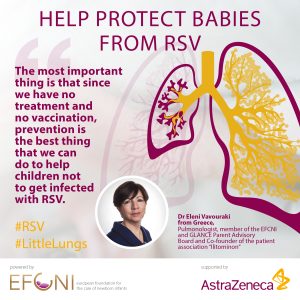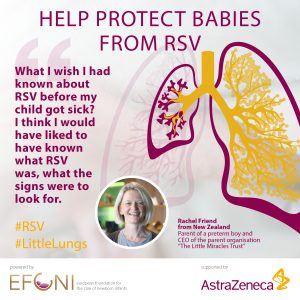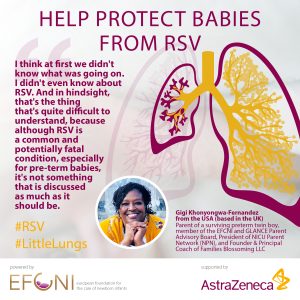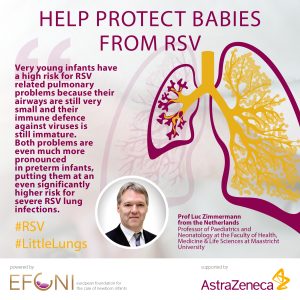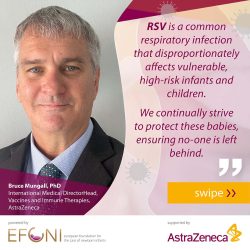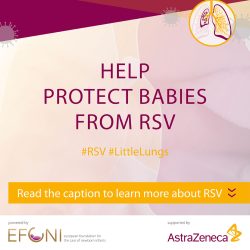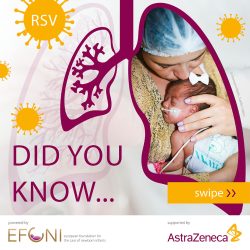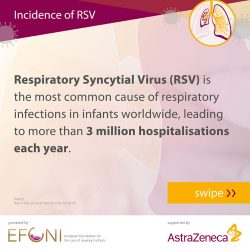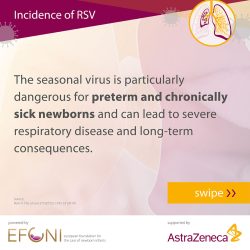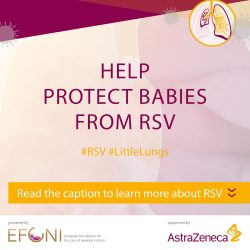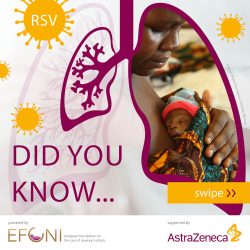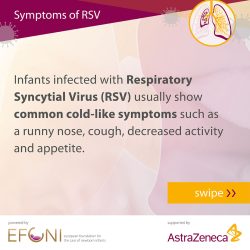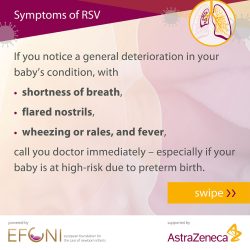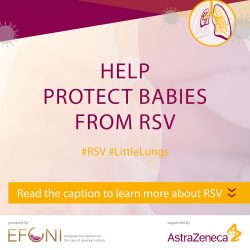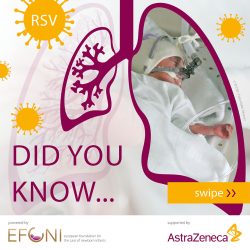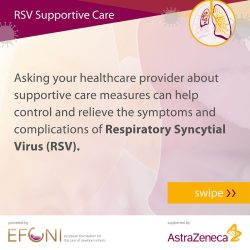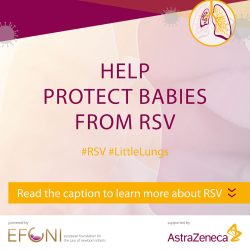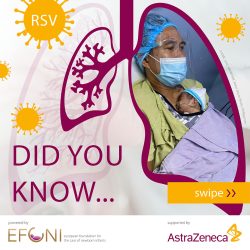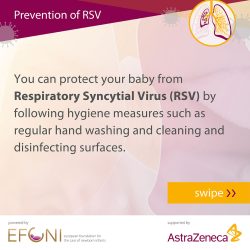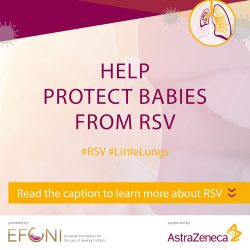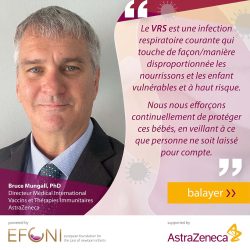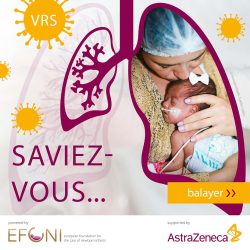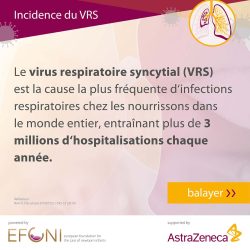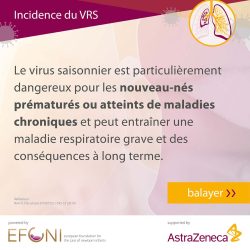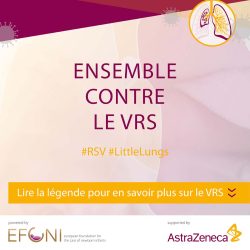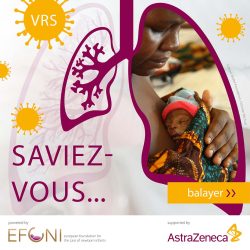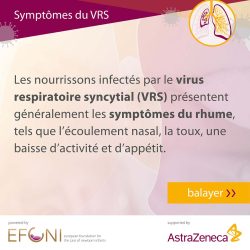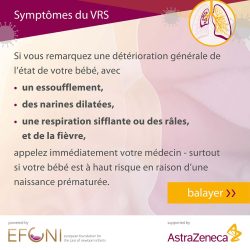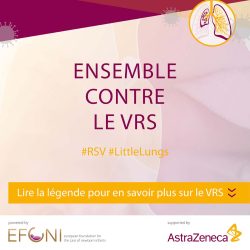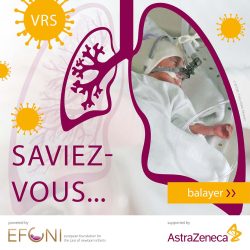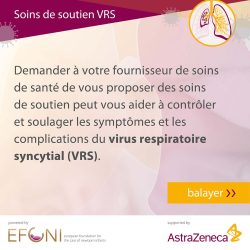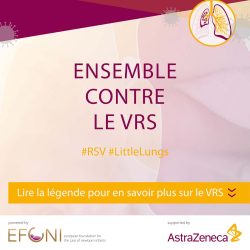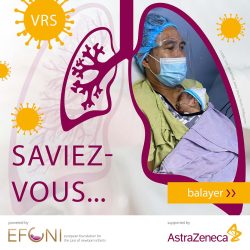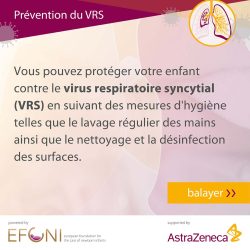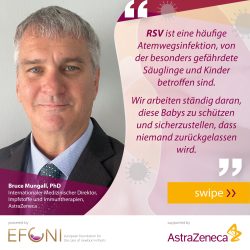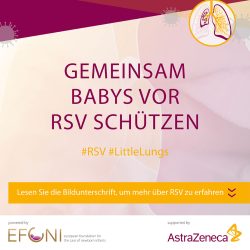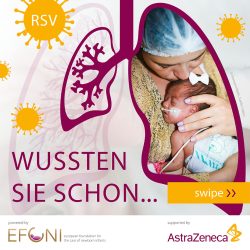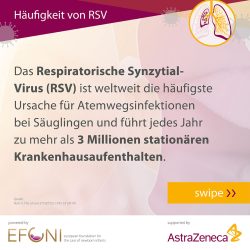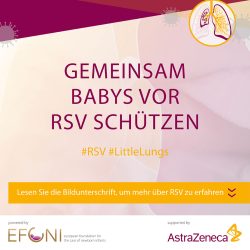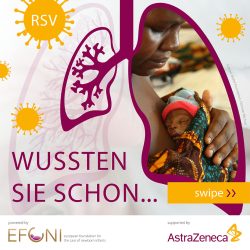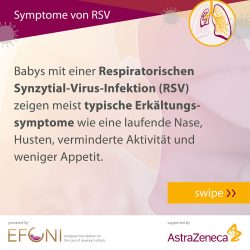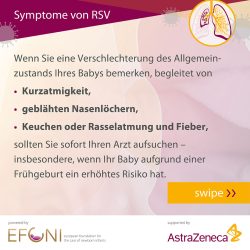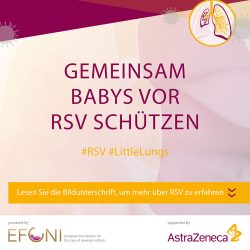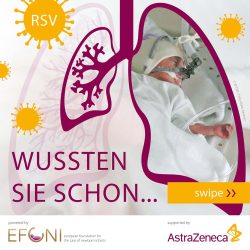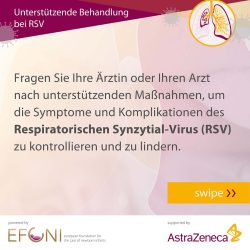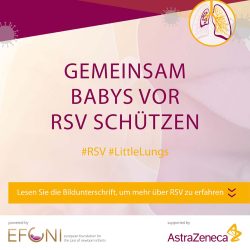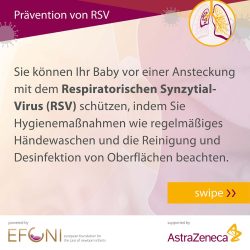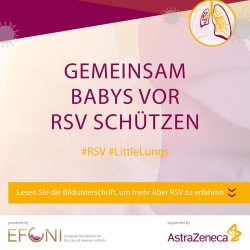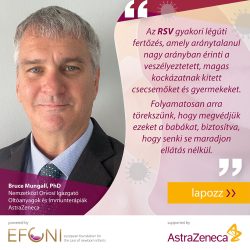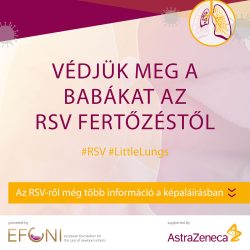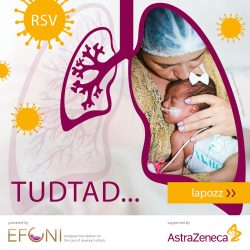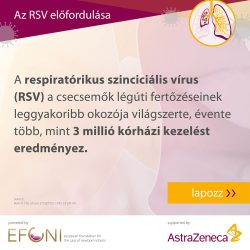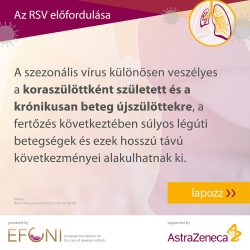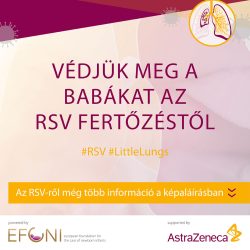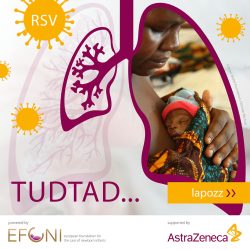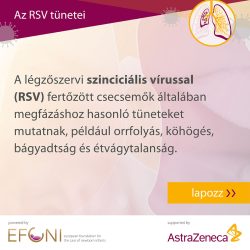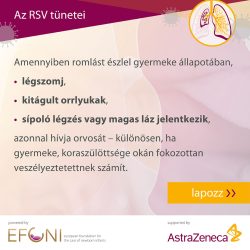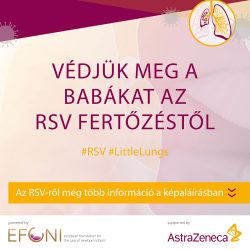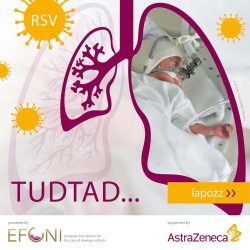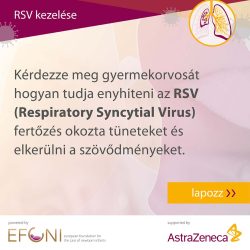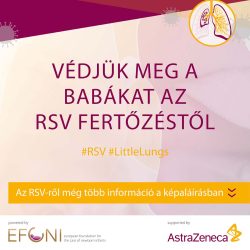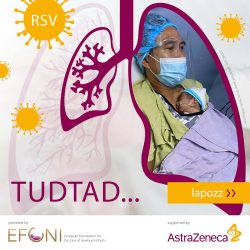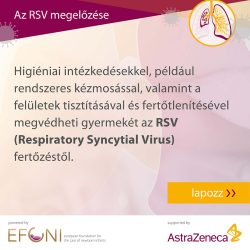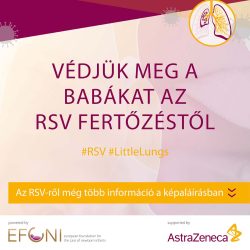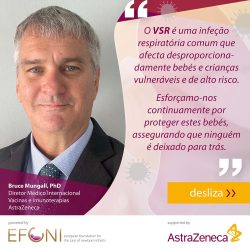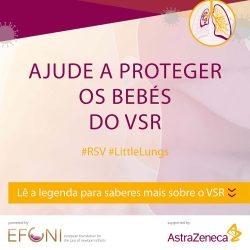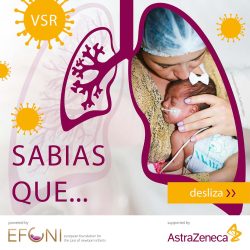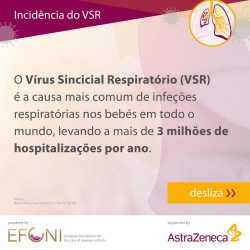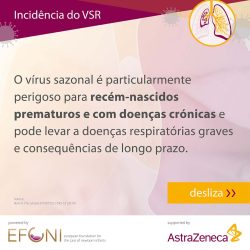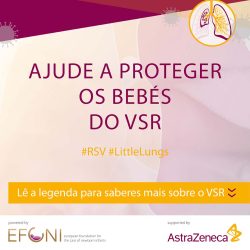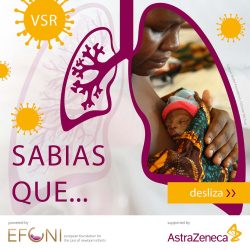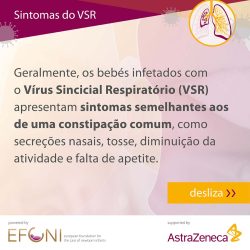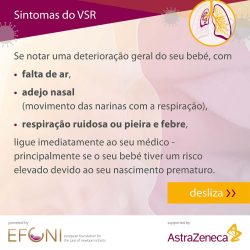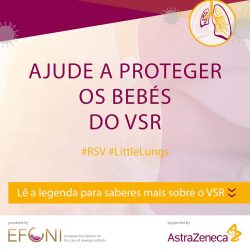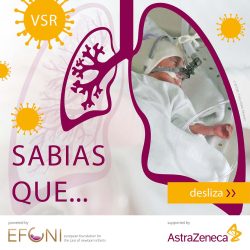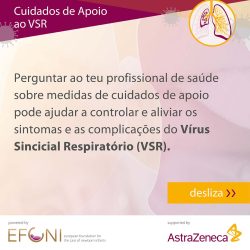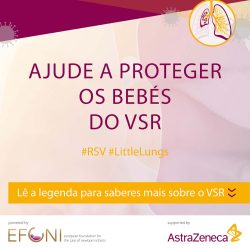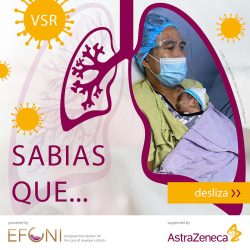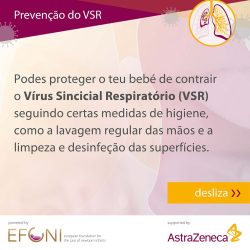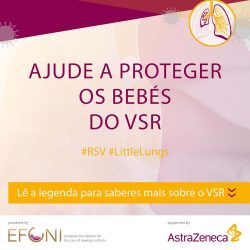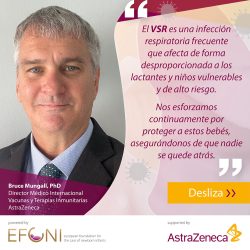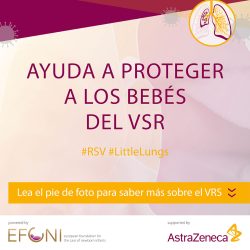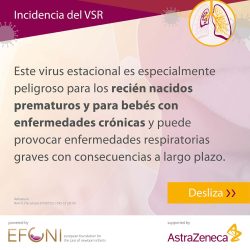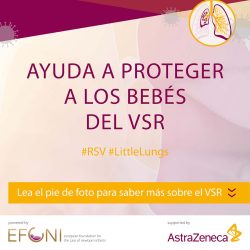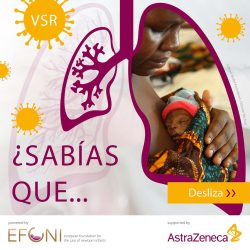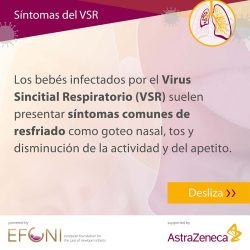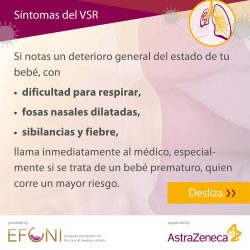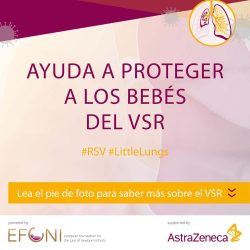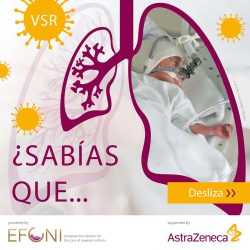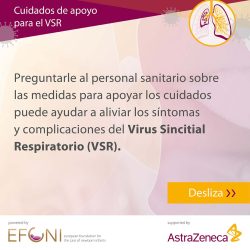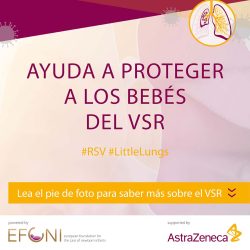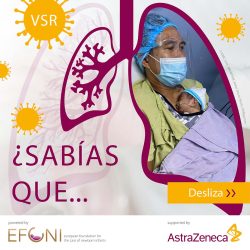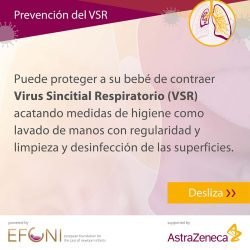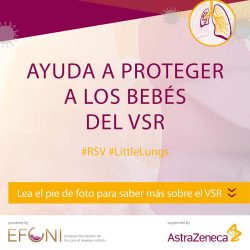RSV in preterm and high risk infants
We deeply care about the lung health of our preterm born infants! Respiratory Syncytial Virus (RSV) should be taken as a serious disease with potentially long-term consequences for the children and their parents and families. Therefore, it is important to inform parents at an early stage about the risks of RSV and keep them involved in every decision.
RSV Information: About the virus and its impact on the very smallest and medically fragile
Respiratory Syncytial Virus (RSV) is a virus that causes infections of the lungs and airways. It commonly appears during the coldest and wettest months of the year, similarly to the influenza virus. In adults and older children the symptoms are commonly mild, with cold-like symptoms such as rhinitis or coughing.

However, if more vulnerable patients – such as preterm infants or those with heart disease or lung disease – are infected with the virus, they may develop a severe lower respiratory tract infection (LRTI) such as bronchiolitis or pneumonia. These complications often lead to hospitalisation or admission to the neonatal intensive care unit, and sometimes mechanical ventilation. In particular, preterm infants and infants with bronchopulmonary dysplasia and haemodynamically significant congenital heart disease are at increased risk of severe RSV infections. If they get an infection, they tend to get sicker than most children do and may need to stay at the hospital for treatment.
RSV is one of the leading causes of childhood hospitalisation and therefore one of the focus topics of EFCNI. If you want to join us to raise awareness for this common yet often unknown or underestimated lung disease, please support our campaign “#LittleLungs – Help protect babies from RSV ” and download and share our materials on your social media channels and website!
Voices of RSV: Highlighted from different perspectives
You are not alone! We have given a voice to affected parents and caregivers, as well as nurses and doctors, to tell their own personal RSV story. Because behind every RSV-afflicted preterm baby is a very personal illness story that touches many people in their immediate environment. First and foremost, of course, the family, but also the hospital staff caring for the child.
Voices of RSV – Different perspectives on RSV
We interviewed parents of preterm and high risk babies and asked them about their personal experience with the RS virus. In addition to these parents’ voices, healthcare professionals also have their say and report on their daily work and challenges with RSV infections, especially in preterm infants.
Watch our compilation of these different perspectives on RSV. What they all have in common is the urgent desire for a sustainable prevention solution in order to help protect babies from RSV.
A heartfelt thank you goes out to everyone who shared their story with us!
Watch individual “Voices of RSV” in our short clips right here or in our YouTube playlist. By sharing these personal RSV experiences and our other information material with your friends or families and on your social networks, you are helping to create more awareness about RSV in preterm and at risk infants.
Thank you for watching and sharing on your channels!
Voices of RSV: Quote cards
Quote cards for download and sharing from those affected by RSV – parents whose child had RSV and medical professionals who care for these children and accompany them during hospital treatment:
RSV Factsheet: All you need to know about RSV in a nutshell

If you would like to get a quick overview of RSV, download our compact factsheet! It provides easy-to-understand information on RSV at a glance. Here you can learn for example…
- which group of children is at risk for a more severe RSV infection?
- what are the most important risk factors?
- how is the virus transmitted?
- what simple hygiene rules can largely reduce the risk of infection?
Special thanks go to Professor Luc Zimmermann for his support and advice in the preparation of this factsheet.
Sounds of RSV: Have you ever wondered what RSV sounds like?
The harmless onset of an RSV infection with mild cold-like symptoms can sometimes develop into a severe course of illness. The very smallest and most vulnerable babies, such as preterm infants and those with a pre-existing conditions, are at significantly higher risk of severe infections which may require medical support and hospitalisation.
This #LittleLungs animation is designed to help you better understand what RSV symptoms can look and sound like in real life, from the very first mild signs to the really serious symptoms of severe RSV disease, so that you can recognise them early and more easily if you notice similar symptoms in your own baby – especially if they are at increased risk. Severe symptoms may inlcude:
– wheezing and rattling sounds
– spreading of nostrils with every breath (nasal flaring)
– caving in of the chest at the ribs (retractions)
– rapid and troubled breathing, and apnoea (breathing stops)
– bluish colour to the lips and fingernails (cyanosis)
Please seek medical help immediately if you notice a general worsening of your baby’s condition, including higher fever and difficulty breathing, or if you hear or see severe RSV symptoms start in your baby, or if you are otherwise concerned about their health.
RSV Awareness: #LittleLungs social media campaign
Our #LittleLungs social media campaign is designed to raise awareness of RSV and to educate parents and healthcare providers about the signs and symptoms of this challenging condition and available preventative options. How can YOU support RSV awareness? You can help spread the word about RSV by downloading our RSV campaign material and sharing it on your social media platforms, your blog or website. Please remember to tag us @efcni (Facebook/Instagram) and @EFCNIwecare (Twitter), and use the hashtags #LittleLungs and #RSV in your social media posts to help us find and like your posts!
ENGLISH social media graphics for download. Can be used as individual images and animations or as image sliders for Facebook/ Instagram/ LinkedIn :
#LittleLungs asset 1 – Statement
#LittleLungs asset 2 – Incidence
#LittleLungs asset 3 – Symptoms
#LittleLungs asset 4 – Sounds of RSV
#LittleLungs asset 5 – Lung anatomy
#LittleLungs asset 6 – Supportive Care
#LittleLungs asset 7 – Prevention
Please find further language versions of our #LittleLungs social media graphics below:
Graphiques de médias sociaux en FRANÇAIS à télécharger, qui peuvent être utilisés comme images et animations individuelles ou comme curseurs d’images pour Facebook/ Instagram/ LinkedIn :
#LittleLungs asset 1 – Statement
#LittleLungs asset 2 – Incidence
#LittleLungs asset 3 – Symptoms
#LittleLungs asset 4 – Sounds of RSV
#LittleLungs asset 5 – Lung anatomy
#LittleLungs asset 6 – Supportive Care
#LittleLungs asset 7 – Prevention
DEUTSCHE Social-Media-Grafiken zum Herunterladen. Die Bilder und Animationen können einzeln oder als Slider für Facebook/ Instagram/ LinkedIn verwendet werden:
#LittleLungs asset 1 – Statement
#LittleLungs asset 2 – Incidence
#LittleLungs asset 3 – Symptoms
#LittleLungs asset 4 – Sounds of RSV
#LittleLungs asset 5 – Lung anatomy
#LittleLungs asset 6 – Supportive Care
#LittleLungs asset 7 – Prevention
MAGYAR közösségi média grafikák letölthetők. A képek és animációk külön-külön vagy csúszkaként is használhatók Facebook/ Instagram/ LinkedIn oldalakon:
#LittleLungs asset 1 – Statement
#LittleLungs asset 2 – Incidence
#LittleLungs asset 3 – Symptoms
#LittleLungs asset 4 – Sounds of RSV
#LittleLungs asset 5 – Lung anatomy
#LittleLungs asset 6 – Supportive Care
#LittleLungs asset 7 – Prevention
Gráficos de redes sociais PORTUGUESAS para descarregar. Pode ser utilizado como imagens e animações individuais ou como imagens deslizantes para o Facebook/ Instagram/ LinkedIn :
#LittleLungs asset 1 – Statement
#LittleLungs asset 2 – Incidence
#LittleLungs asset 3 – Symptoms
#LittleLungs asset 4 – Sounds of RSV
#LittleLungs asset 5 – Lung anatomy
#LittleLungs asset 6 – Supportive Care
#LittleLungs asset 7 – Prevention
Gráficos para redes sociales en ESPAÑOL para descargar. Las imágenes y animaciones pueden utilizarse individualmente o como sliders para Facebook/ Instagram/ LinkedIn:
#LittleLungs asset 1 – Statement
#LittleLungs asset 2 – Incidence
#LittleLungs asset 3 – Symptoms
#LittleLungs asset 4 – Sounds of RSV
#LittleLungs asset 5 – Lung anatomy
#LittleLungs asset 6 – Supportive Care
#LittleLungs asset 7 – Prevention
Interview: Professor Luc Zimmermann on RSV in preterm babies
 Prof Luc J. I. Zimmermann is Professor of Paediatrics and Neonatology at Maastricht UMC+ in the Netherlands and Medical Director of EFCNI.
Prof Luc J. I. Zimmermann is Professor of Paediatrics and Neonatology at Maastricht UMC+ in the Netherlands and Medical Director of EFCNI.
In this interview he explains:
- How a typical course of infection with RSV looks like
- Why preterm and ill babies are more at risk for serious complications from RSV infections
- How important hygiene measures are to prevent an infection
- In what cases the administration of a prophylactic drug makes sense
Position Paper: “RSV in preterm and ill infants”
An expert roundtable was the starting point for the creation of the RSV position paper: On the initiative of EFCNI, a high-ranking panel of medical and patient experts met in Munich in October 2018 to discuss the challenges of RSV-related infections in preterm and ill infants in different countries, and the measures that are taken on a national level to improve the infection and hospitalisation rates.

After a day of fruitful discussions, the key points for improvement were identified and agreed . The position paper was developed and finalised in August 2019 and officially launched at the 3rd Congress of joint European Neonatal Societies (jENS) in Maastricht in September 2019. One year later, in December 2020, an updated version with an extended list of prophylaxis guidelines from 33 countries was published again.
You can have a look at the experts’ common call to advocate for preventive measures to reduce the number of RSV infections:
So far, there is neither a vaccination nor a curative treatment available . The most effective method to prevent RSV infections in infants and young children are simple hygiene and behavioural measures. In addition, in some cases, immunoprophylaxis, which has been shown to be safe and effective, may be considered for high-risk children during the RSV season. For more information, please contact your paediatrician.
The RSV awareness campaign was independently developed and is powered by EFCNI.
The topic “Respiratory syncyial virus (RSV)” is supported by



